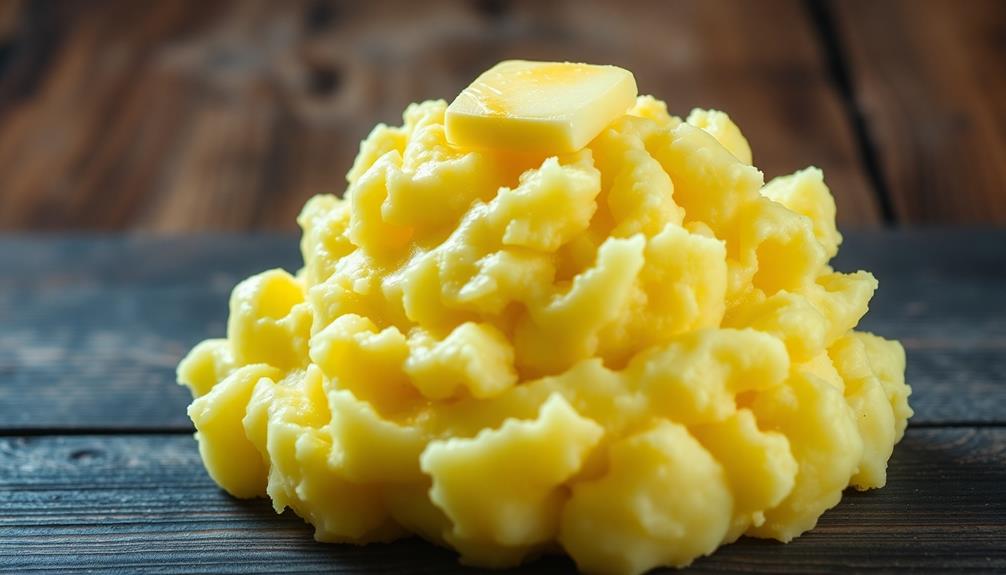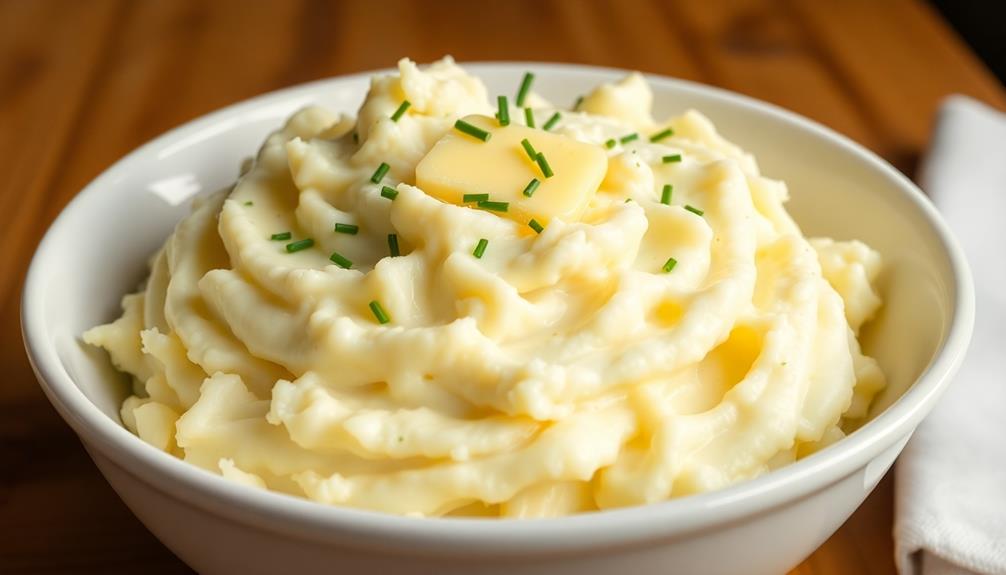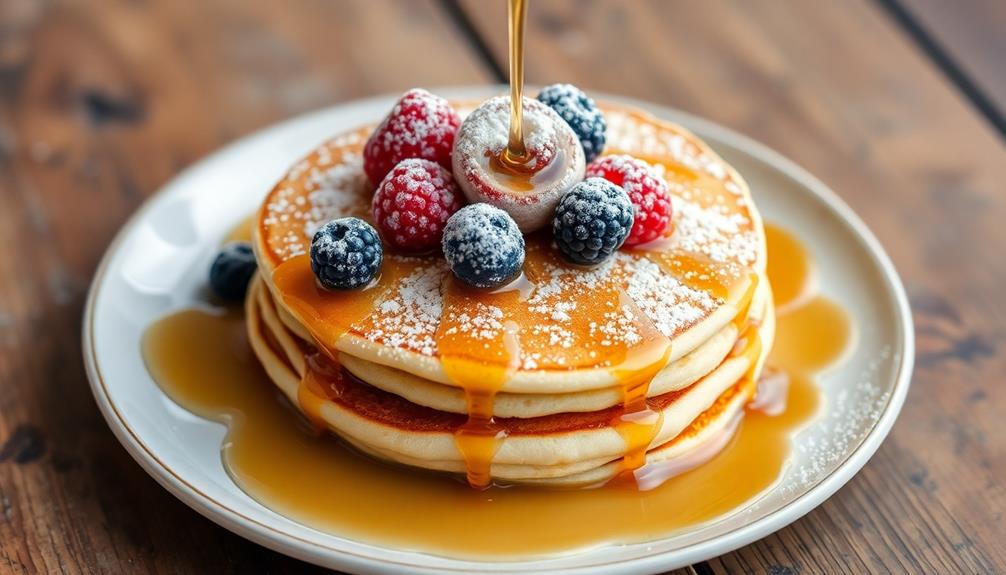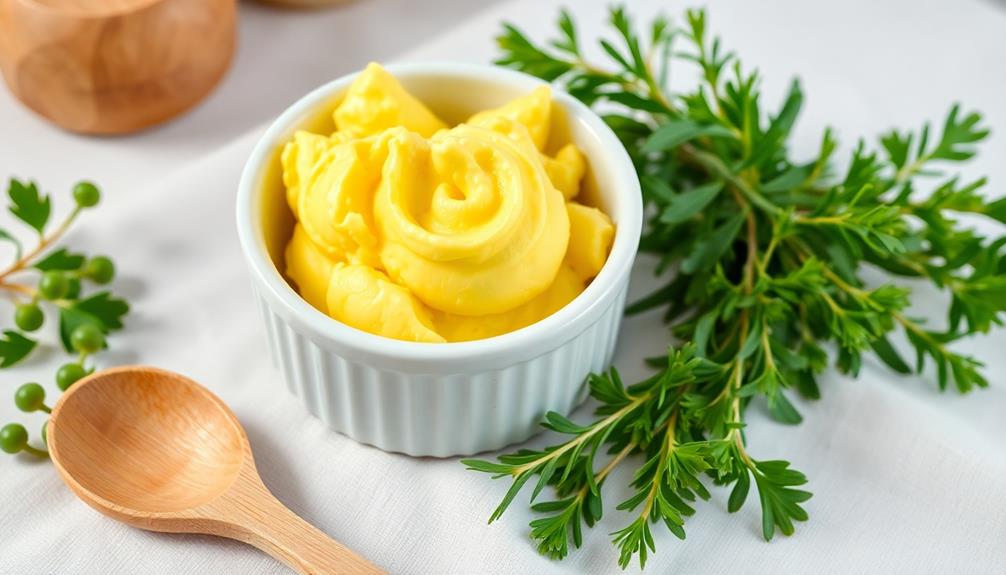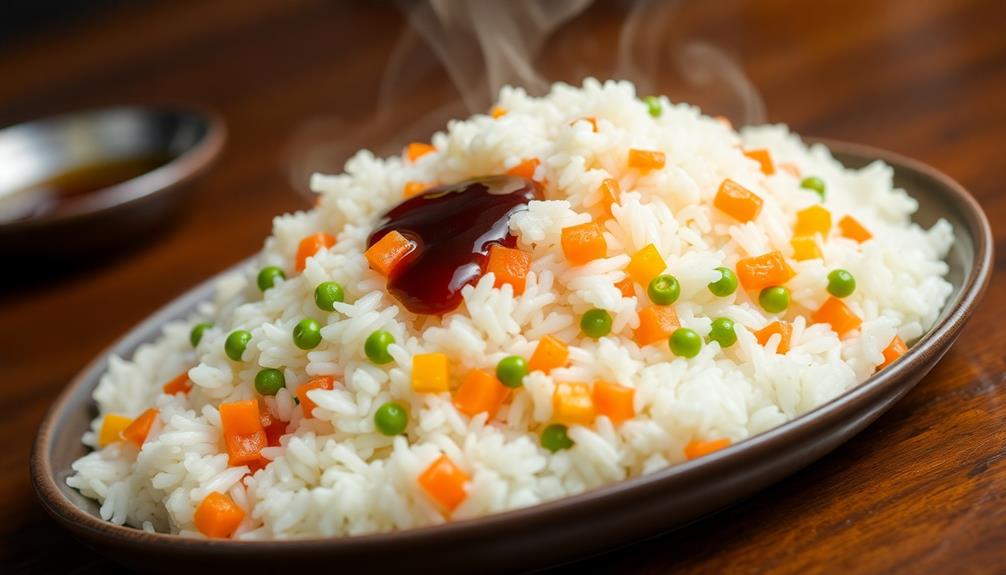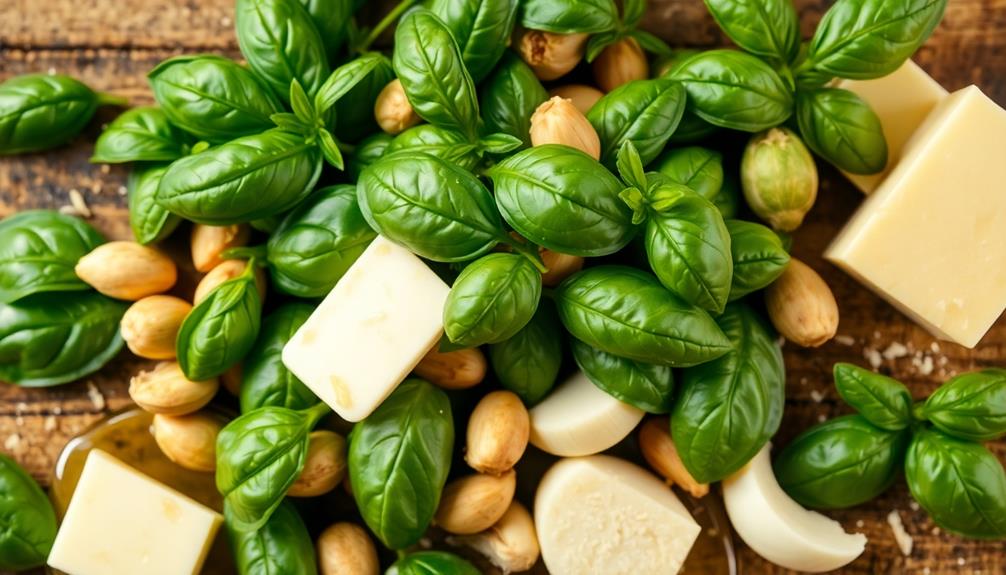Mashed potatoes are a cherished comfort food with a rich history dating back over 7,000 years to the Andes Mountains. To make them perfectly creamy, choose starchy potato varieties like Yukon Gold or Russet, and peel and cut them into even chunks before boiling until tender. Gradually incorporate warm milk and softened butter, mashing with a potato masher or ricer for a smooth texture. Season with salt and pepper to taste, and consider adding garlic, herbs, or cheese for extra flavor. Serve the fluffy mashed potatoes immediately for the best experience – and keep reading to learn more easy tips.
Key Takeaways
- Choose starchy potato varieties like Yukon Gold or Russet for optimal creaminess, and avoid waxy potatoes that can result in a gluey texture.
- Boil the potatoes until tender, then drain and return to the pot to remove excess moisture before mashing.
- Incorporate softened butter and warm milk gradually while mashing to achieve a smooth, creamy texture, and avoid overmixing to prevent a gluey consistency.
- Season the mashed potatoes with salt and pepper, adjusting to taste, and consider adding complementary flavors like garlic, herbs, or cheese.
- Serve the mashed potatoes immediately for the best texture and flavor, and store leftovers in an airtight container, reheating gently to maintain quality.
History
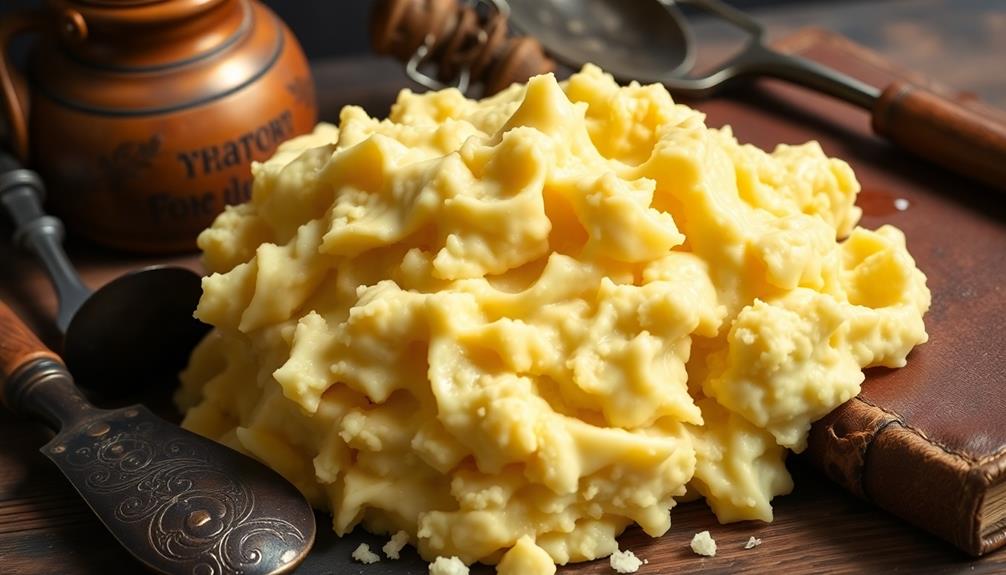
Throughout history, mashed potatoes have been a staple side dish enjoyed by people around the world. Originating in the Andes Mountains of South America, potatoes were first domesticated by indigenous Andean civilizations over 7,000 years ago.
When European explorers encountered the potato in the 16th century, they quickly recognized its potential as a versatile and nutritious crop.
The modern mashed potato dish emerged in the 18th century, as potatoes became more widely cultivated and consumed across Europe and North America. Early recipes called for boiling potatoes, then mashing them with butter, milk, and seasonings. This simple preparation allowed the natural starchiness and flavor of the potato to shine.
As potato varieties diversified and cooking techniques improved, mashed potatoes evolved into the creamy, fluffy side dish we know and love today.
Whether served alongside roast meats, stews, or simply on their own, mashed potatoes have become a cherished comfort food enjoyed by generations.
Recipe
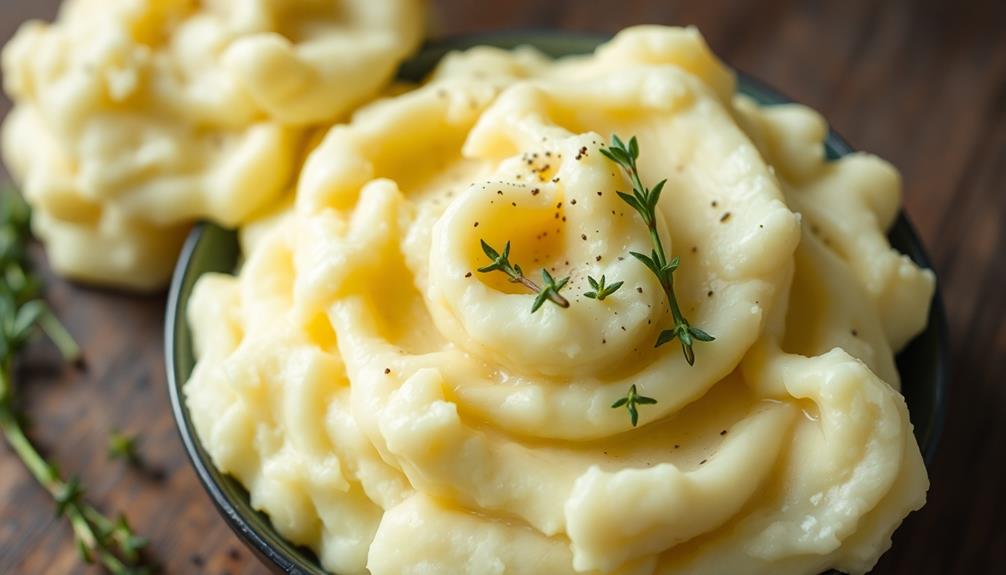
Mashed potatoes are a versatile and comforting side dish that can elevate any meal. When done right, they're creamy, fluffy, and bursting with flavor. The key to achieving the perfect mashed potatoes lies in the preparation and technique.
First and foremost, it's essential to use the right type of potato. Starchy varieties, such as Yukon Gold or Russet, are ideal as they'll produce a creamy and smooth texture when mashed. Avoid waxy potatoes, as they can result in a gummy and dense consistency.
- 3 pounds Yukon Gold or Russet potatoes, peeled and cut into 1-inch cubes
- 1 cup whole milk, warmed
- 6 tablespoons unsalted butter, softened
- 1 teaspoon salt
- 1/4 teaspoon white pepper
To begin, place the cubed potatoes in a large pot and cover them with cold water. Bring the water to a boil over high heat, then reduce the heat to maintain a gentle simmer. Cook the potatoes until they're very tender, about 15-20 minutes.
Drain the potatoes well in a colander and return them to the hot pot for a minute or two to evaporate any remaining moisture.
Using a potato masher or a ricer, mash the potatoes until they're smooth and lump-free. Gradually add the warm milk and softened butter, mashing and incorporating the ingredients after each addition. Season with salt and white pepper, adjusting the seasoning to your taste.
For the best results, serve the mashed potatoes immediately while they're hot and fluffy. However, if you need to keep them warm, transfer the potatoes to a serving bowl, cover with a damp paper towel, and place in a 200°F oven until ready to serve.
This simple trick will prevent the potatoes from drying out. Enjoy your perfect mashed potatoes!
Cooking Steps
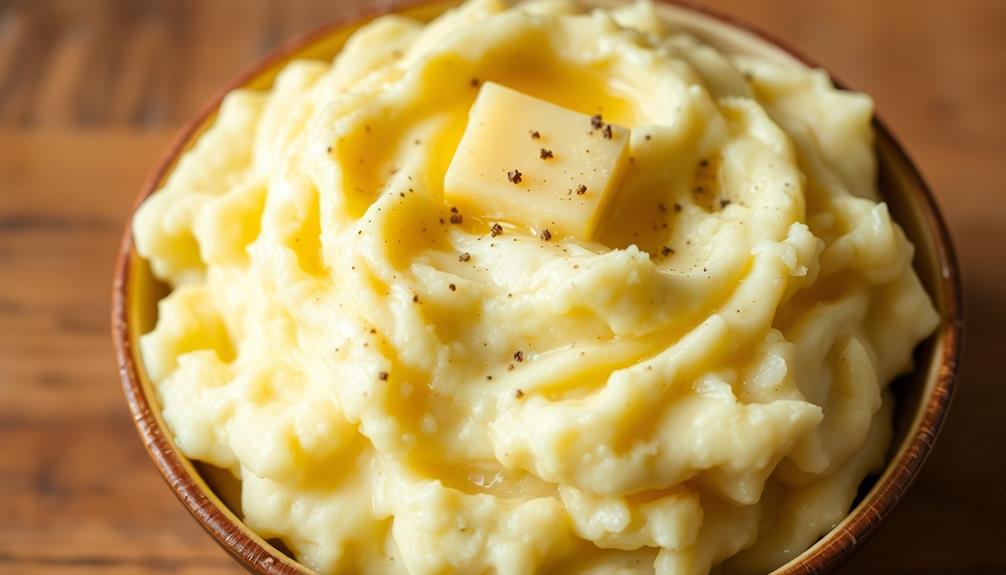
Peel and chop the potatoes into evenly-sized chunks so they cook at the same rate.
Boil the potatoes in salted water until they're tender when pierced with a fork.
Once drained, return the potatoes to the pot and mash them with butter and warm milk, then season with salt and pepper to taste.
Step 1. Peel and Cut Potatoes Into Chunks
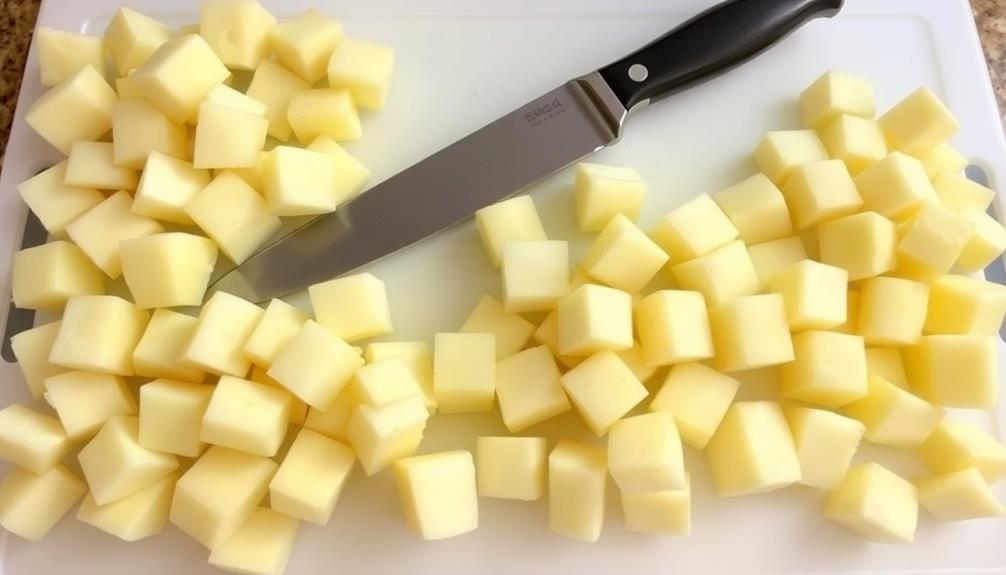
Grab a sharp knife and peeler to tackle the first step. Peel the potatoes, removing any eyes, bruises, or discolored areas. Rinse the peeled potatoes under cool running water to remove any excess starch.
Next, cut the potatoes into evenly-sized chunks, approximately 1-inch in size. This uniform cutting will ensure the potatoes cook at the same rate. Place the potato chunks in a large pot and cover them with cold water by about an inch. This will prevent the potatoes from browning before cooking.
Bring the water to a boil over high heat. Once boiling, reduce the heat to medium-low and let the potatoes simmer for 15-20 minutes, until they're fork-tender. Be careful not to overcook, as that can lead to a gummy, dense mash.
Drain the potatoes well in a colander, then return them to the hot pot for a minute to evaporate any excess moisture. You're now ready to mash them to perfection!
Step 2. Boil Potatoes Until Tender
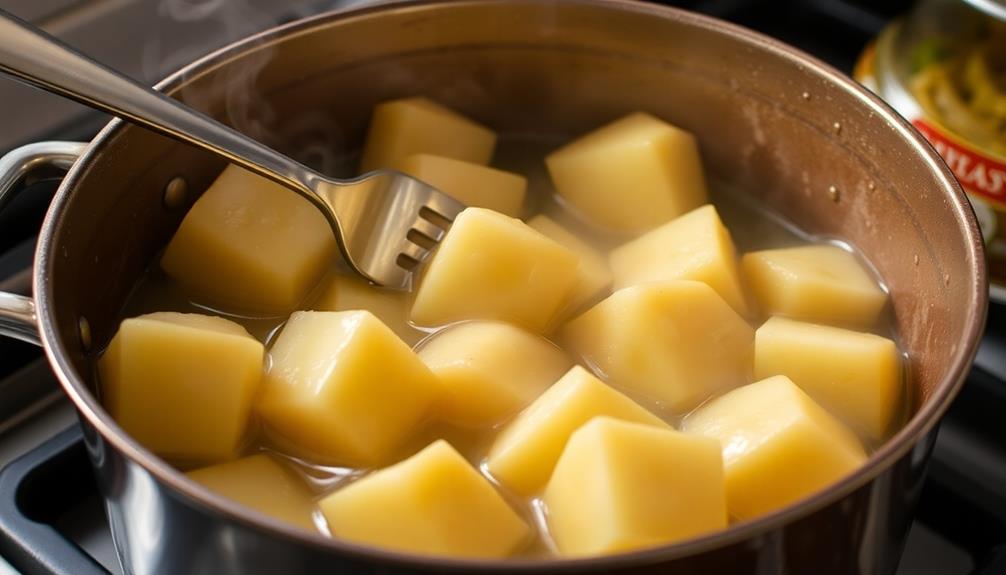
Once the potatoes have been peeled and cut into evenly-sized chunks, you'll want to bring them to a boil. Fill a large pot with enough cold water to cover the potato pieces by about an inch. Place the pot over high heat and let it come to a rapid boil.
Once boiling, reduce the heat to maintain a gentle simmer.
Cook the potatoes for 15-20 minutes, or until they're easily pierced with a fork. You'll know they're done when a fork slides in and out of the chunks with minimal resistance.
Be careful not to overcook them, as this can lead to waterlogged, mushy potatoes.
Drain the cooked potatoes well in a colander, then return them to the hot pot for a minute or two to allow any excess moisture to evaporate.
This extra step helps ensure your mashed potatoes turn out light and fluffy, not heavy or dense.
Now you're ready to mash them to perfection!
Step 3. Drain and Return to Pot
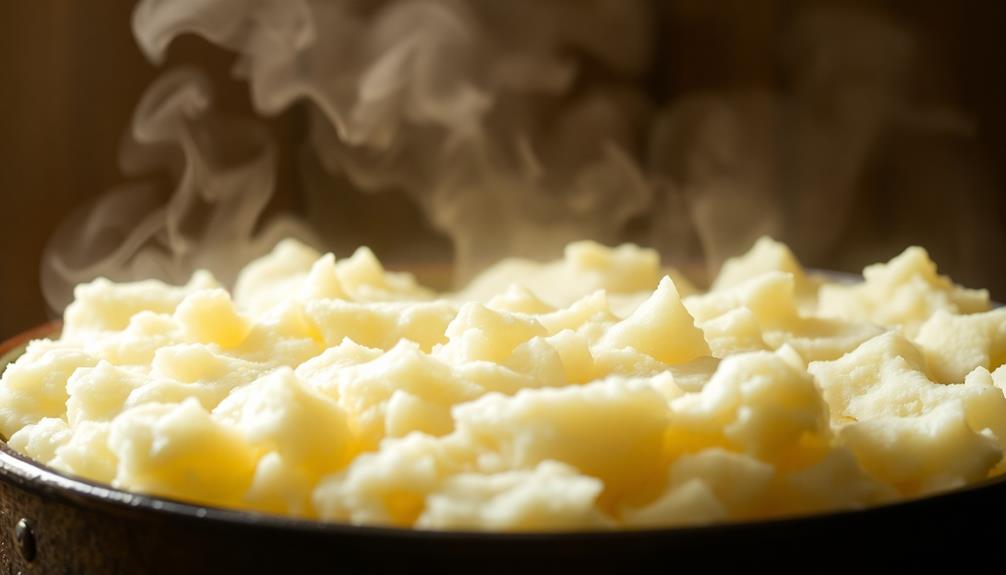
After draining the cooked potatoes in a colander, return them to the hot pot for a minute or two. This brief step helps remove any excess moisture, allowing you to achieve the signature creamy texture of perfect mashed potatoes.
Once back in the pot, use a potato masher or ricer to mash the potatoes. Avoid overmixing, as this can result in a gluey consistency. For best results, mash the potatoes until they reach your desired level of smoothness.
- Mash potatoes gently to avoid overworking the starches
- Return potatoes to the hot pot for 1-2 minutes to dry out excess moisture
- Use a potato masher or ricer for a consistently smooth, lump-free texture
The key at this stage is to strike a balance – mash just enough to break down the potatoes, but not so much that you end up with a gummy, unappetizing consistency.
With a little practice, you'll be on your way to mashed potato perfection.
Step 4. Mash Potatoes With Butter and Milk
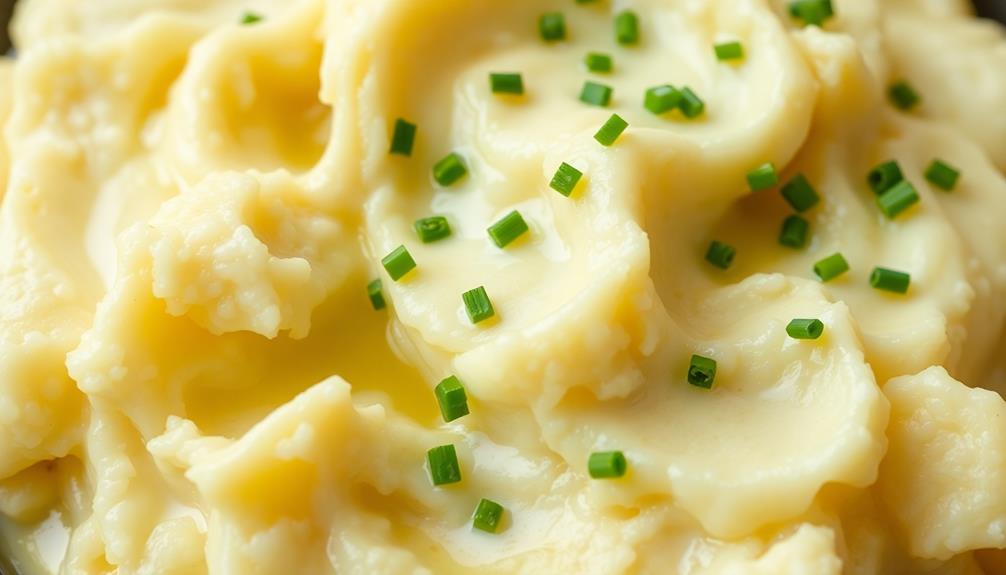
With the potatoes dried out and ready to go, it's time to add the butter and milk. This is where the magic happens, transforming the humble spud into a rich, creamy delight. As you mash the potatoes, slowly pour in the warm milk and melted butter, blending everything until smooth and velvety. The key is to achieve the perfect balance, much like following a **perfect pancakes from scratch recipe**, where each ingredient plays a crucial role in texture and flavor. With just a little patience and the right technique, your mashed potatoes will come together as effortlessly as that go-to breakfast favorite.
Start by grabbing a sturdy masher or potato ricer. Gently mash the potatoes, working in small batches to ensure an even texture.
As you mash, gradually incorporate the butter, letting it melt and blend seamlessly into the potatoes. The butter not only adds a delightful flavor but also contributes to the silky smooth consistency you're after.
Next, slowly pour in the milk, a little at a time, continuing to mash until you achieve the desired creaminess.
Be mindful not to overmix, as that can result in a gluey texture. The key is to mash just enough to break down the potatoes while maintaining their light, fluffy nature.
Once you've reached your perfect mashed potato consistency, season with salt and pepper to taste. Now, you're ready to serve up a side dish that's sure to impress.
Step 5. Season With Salt and Pepper
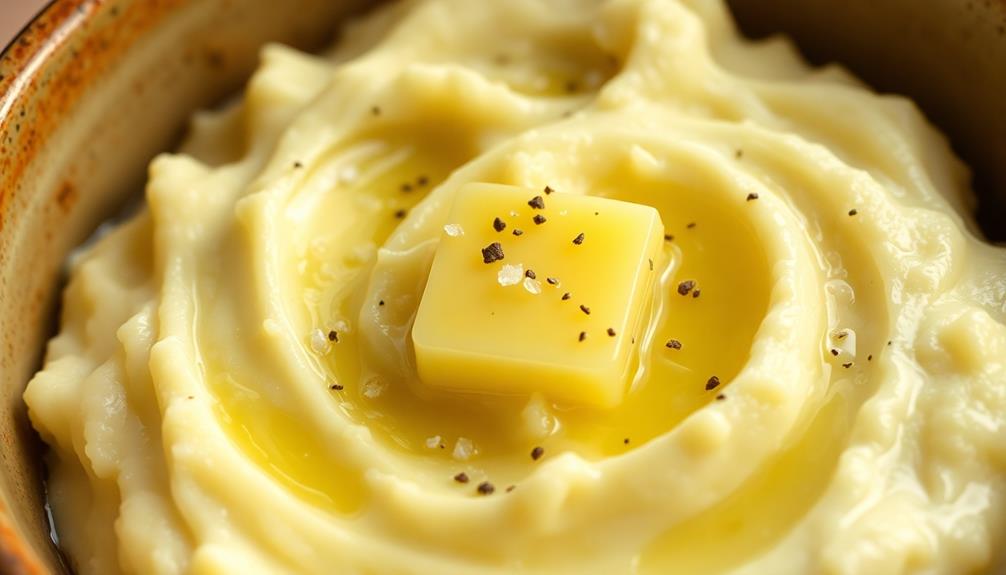
Now that you've achieved the perfect creamy consistency, seasoning the mashed potatoes is crucial for enhancing their flavor. Consider pairing them with a savory appetizer like Crab Cakes to create a delightful meal experience.
Start with a light hand, adding just a pinch of each at first. Taste the potatoes and continue seasoning until the flavors are balanced to your liking. Remember, it’s always easier to add more seasoning than to fix an overly salty dish, so take your time to get it just right. This method works perfectly with any easy baked potato recipe, allowing you to customize the flavors to suit your preferences. Once you’re satisfied, serve them warm and enjoy this simple yet delicious dish!
The amount of salt and pepper needed will vary depending on personal preference and the size of your potato batch. As a general guideline, aim for 1/2 teaspoon of salt and 1/4 teaspoon of black pepper per pound of potatoes. However, feel free to adjust these amounts to suit your taste buds.
When seasoning, be sure to incorporate the salt and pepper thoroughly throughout the mashed potatoes. This ensures an even distribution of flavor in every bite.
You can use a fork or potato masher to gently mix in the seasonings. Taste and adjust as needed until the mashed potatoes are perfectly seasoned.
Final Thoughts
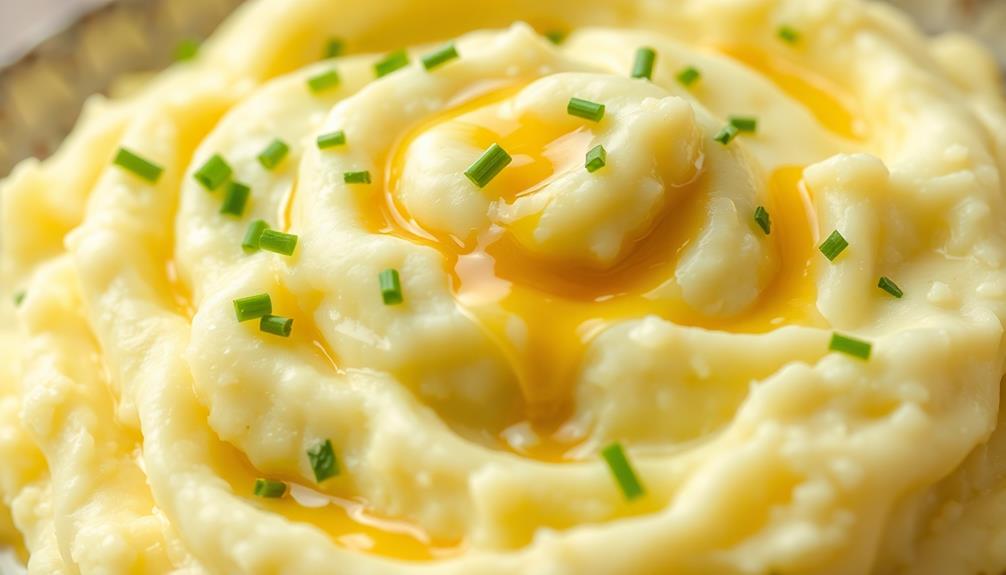
Ultimately, the key to perfecting mashed potatoes lies in striking the right balance between creaminess and consistency. While the individual steps you've learned – from selecting the right potato to mashing and seasoning – are all crucial, it's the final touches that truly elevate your dish.
Be mindful of the texture you're aiming for. Mashed potatoes shouldn't be stiff or gluey, but rather light and fluffy. Incorporate dairy and seasonings gradually, tasting as you go to achieve your desired consistency.
Don't be afraid to add a splash of milk or cream if the potatoes seem too thick.
Frequently Asked Questions
Can I Use an Electric Mixer to Make Mashed Potatoes?
You can definitely use an electric mixer to make mashed potatoes. It's a quick and efficient way to get that smooth, creamy texture. Just be careful not to overmix, or you may end up with gummy potatoes.
How Do I Know When the Potatoes Are Done Boiling?
To know when the potatoes are done boiling, you should check them with a fork or knife. The potatoes are ready when they're easily pierced and tender throughout. Don't overcook them, or they'll become waterlogged.
Can I Make Mashed Potatoes Ahead of Time?
You can absolutely make mashed potatoes ahead of time. Simply mash the cooked potatoes, add your desired seasonings, and store the mixture in the refrigerator for up to 3 days. When ready to serve, reheat gently on the stovetop or in the microwave.
What Can I Do if My Mashed Potatoes Are Too Watery?
If your mashed potatoes are too watery, try adding more potatoes or simmering them longer to reduce the moisture. You can also try draining the potatoes well before mashing or mixing in some additional butter, milk, or sour cream to thicken the texture.
Is It Better to Use Russet or Yukon Gold Potatoes?
Russet potatoes are better for mashed potatoes if you prefer a fluffier, lighter texture. Yukon Golds have a creamier, richer flavor, making them ideal if you want a more velvety mash. Choose based on your personal taste preferences.
